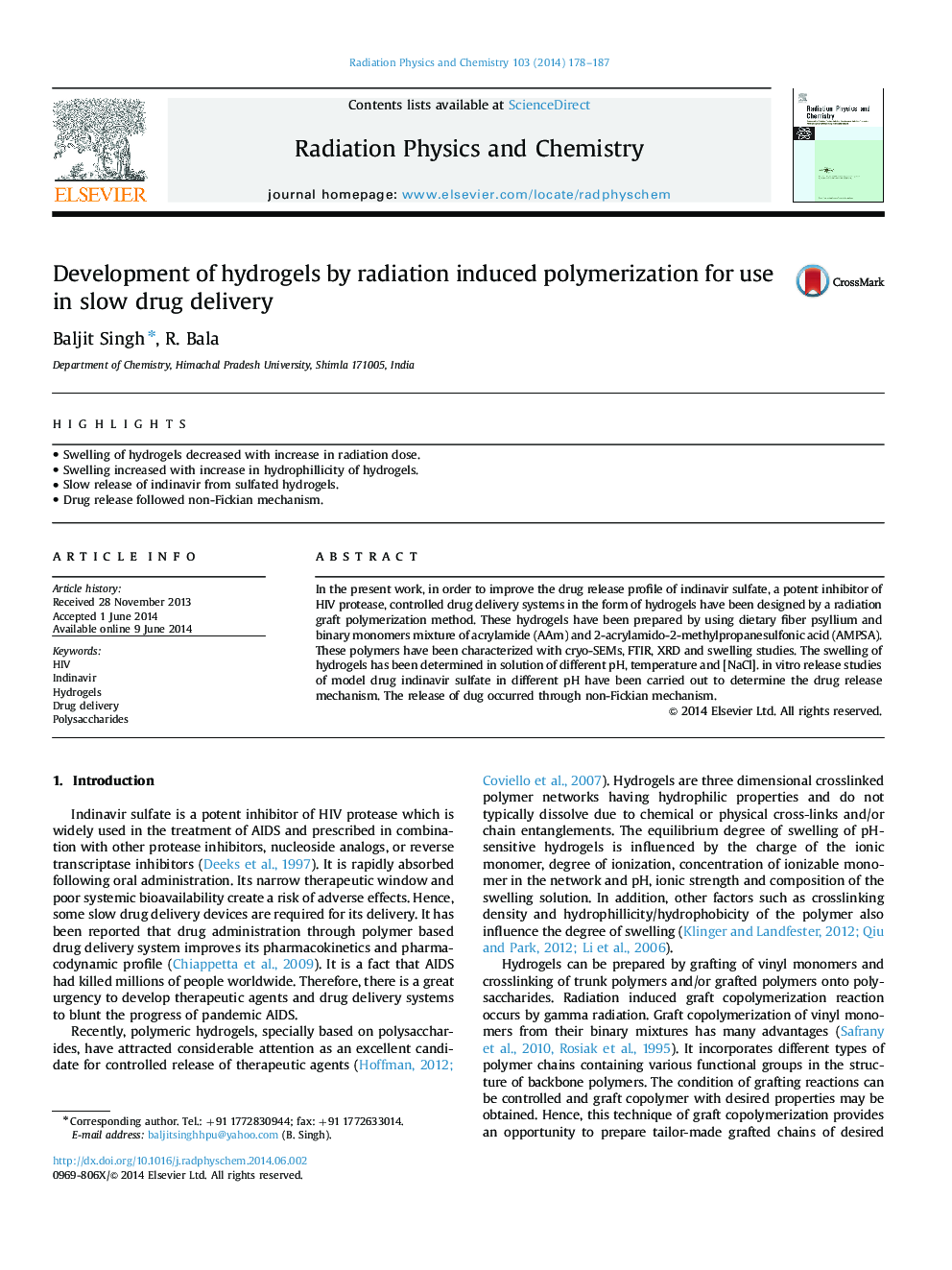| Article ID | Journal | Published Year | Pages | File Type |
|---|---|---|---|---|
| 1891232 | Radiation Physics and Chemistry | 2014 | 10 Pages |
•Swelling of hydrogels decreased with increase in radiation dose.•Swelling increased with increase in hydrophillicity of hydrogels.•Slow release of indinavir from sulfated hydrogels.•Drug release followed non-Fickian mechanism.
In the present work, in order to improve the drug release profile of indinavir sulfate, a potent inhibitor of HIV protease, controlled drug delivery systems in the form of hydrogels have been designed by a radiation graft polymerization method. These hydrogels have been prepared by using dietary fiber psyllium and binary monomers mixture of acrylamide (AAm) and 2-acrylamido-2-methylpropanesulfonic acid (AMPSA). These polymers have been characterized with cryo-SEMs, FTIR, XRD and swelling studies. The swelling of hydrogels has been determined in solution of different pH, temperature and [NaCl]. in vitro release studies of model drug indinavir sulfate in different pH have been carried out to determine the drug release mechanism. The release of dug occurred through non-Fickian mechanism.
